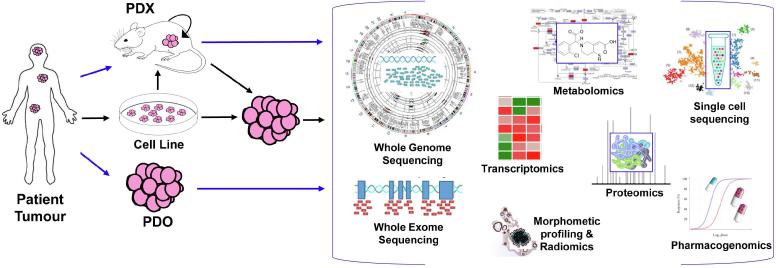Patient-derived organoids (PDO) and patient-derived xenografts (PDX) proceed to emerge as necessary preclinical platforms for investigations into the molecular panorama of cancer. While the benefits and drawback of those models have been described in element, this evaluate focuses in explicit on the bioinformatics and state-of-the artwork strategies that accompany preclinical mannequin growth.
We focus on the energy and limitations of presently used applied sciences, notably ‘omics profiling and bioinformatics analyses, in addressing the ‘efficacy’ of preclinical models, each for tumour characterization in addition to their use in figuring out potential therapeutics. We choose pancreatic ductal adenocarcinoma (PDAC) as a case research to spotlight the state-of-the-art of the sector, and tackle new avenues for improved bioinformatics characterization of preclinical models.

Doxorubicin plus dacarbazine, doxorubicin plus ifosfamide, or doxorubicin alone as a first-line remedy for superior leiomyosarcoma: A propensity rating matching evaluation from the European Organization for Research and Treatment of Cancer Soft Tissue and Bone Sarcoma Group.
The optimum remedy for superior leiomyosarcoma remains to be debated. Given histotype-specific potential managed information missing, this research retrospectively evaluated doxorubicin plus dacarbazine, doxorubicin plus ifosfamide, and doxorubicin alone as first-line remedies for superior/metastatic leiomyosarcoma handled at European Organization for Research and Treatment of Cancer Soft Tissue and Bone Sarcoma Group (EORTC-STBSG) websites.The inclusion standards have been a confirmed histological prognosis, remedy between January 2010 and December 2015, measurable disease (Response Evaluation Criteria in Solid Tumors 1.1), an Eastern Cooperative Oncology Group efficiency standing ≤2, and an age ≥ 18 years. The endpoints have been progression-free survival (PFS), general survival (OS), and general response charge (ORR).
PFS was analyzed with strategies for interval-censored information. Patients have been matched based on their propensity scores, which have been estimated with a logistic regression mannequin accounting for histology, grade, age, intercourse, efficiency standing, tumor web site, and tumor extent.
Three hundred three sufferers from 18 EORTC-STBSG websites have been recognized. One hundred seventeen (39%) acquired doxorubicin plus dacarbazine, 71 (23%) acquired doxorubicin plus ifosfamide, and 115 (38%) acquired doxorubicin. In the two:1:2 propensity score-matched inhabitants (205 sufferers), the estimated median PFS was 9.2 months (95% confidence interval [CI], 5.2-9.7 months), 8.2 months (95% CI, 5.2-10.1 months), and 4.
Eight months (95% CI, 2.3-6.Zero months) with ORRs of 30.9%, 19.5%, and 25.6% for doxorubicin plus dacarbazine, doxorubicin plus ifosfamide, and doxorubicin alone, respectively.
PFS was considerably longer with doxorubicin plus dacarbazine versus doxorubicin (hazard ratio [HR], 0.72; 95% CI, 0.52-0.99). Doxorubicin plus dacarbazine was related to longer OS (median, 36.Eight months; 95% CI, 27.9-47.2 months) in comparability with each doxorubicin plus ifosfamide (median, 21.9 months; 95% CI, 16.7-33.Four months; HR, 0.65; 95% CI, 0.40-1.06) and doxorubicin (median, 30.Three months; 95% CI, 21.0-36.Three months; HR, 0.66; 95% CI, 0.43-0.99). Adjusted analyses retained an impact for PFS however not for OS. None of the components chosen for multivariate evaluation had a big interplay with the acquired remedy for each PFS and OS.This is the most important retrospective research of first-line remedy for superior leiomyosarcoma. In the propensity score-matched inhabitants, doxorubicin and dacarbazine confirmed favorable exercise in phrases of each ORR and PFS and warrants additional analysis in potential trials.